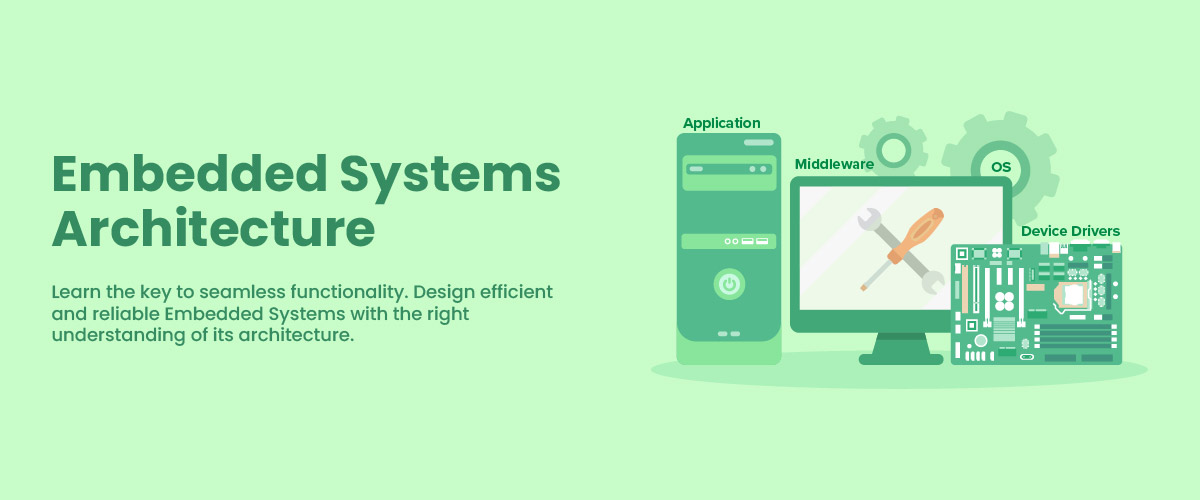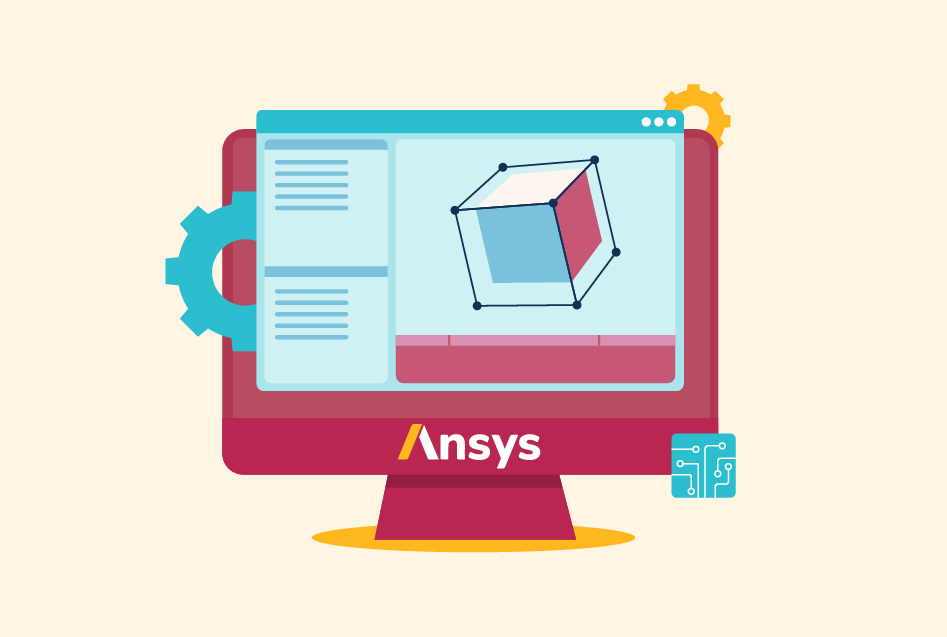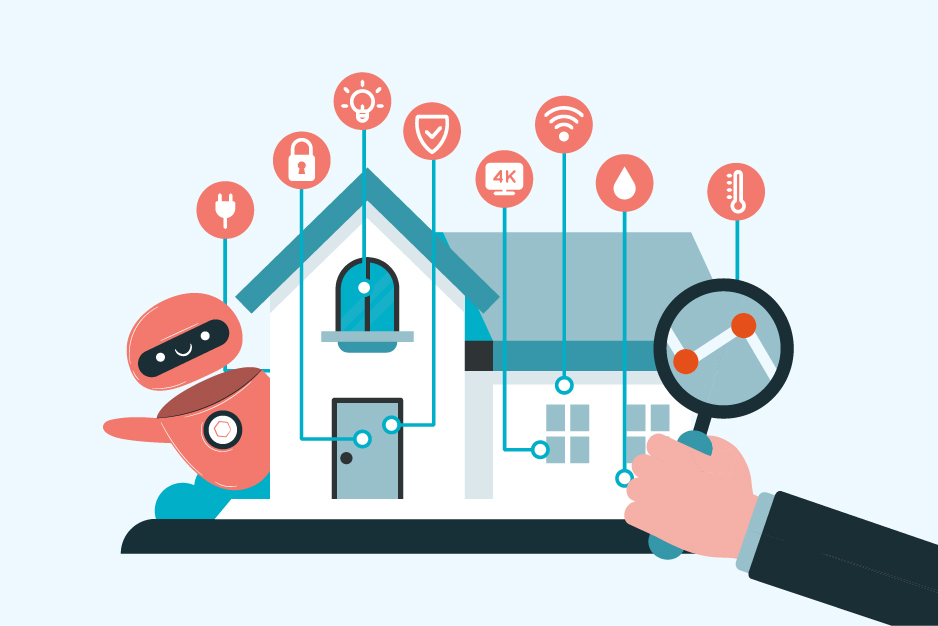Embedded Systems Architecture: A Comprehensive Guide
Did you know that the embedded systems market was worth almost $140 billion in 2022 and it is expected to grow 6% CAGR from 2023 to 2032?
The main task of embedded systems is to take control of a specific function and to keep performing that certain function repeatedly. To understand the full working mechanism of embedded systems, it is important to study embedded systems architecture and learn how it is designed.
In this blog, we will learn about the architecture of embedded systems to get an idea of their functions and certain tasks that it performs.
What is Embedded Systems Architecture?
The hardware and software design of components that make an embedded system is called the embedded system architecture. The architecture is different based on certain purposes and the environment that it was made to operate in. It consists of various design components of an embedded system that include microprocessors, memory devices, and sensors.
For example, if you monitor numerous operations in a huge electric motor of an industry, it will require a vast network of controllers. But when you check an embedded system in a small home appliance, it becomes simpler and focused on a specific task. You can learn more on this subject by enrolling yourself in an embedded systems course.
Layers of Embedded Systems Architecture
The embedded systems are made of numerous architectural levels, and each of those architectural levels has a different set of functionalities. There are two common layers in the embedded system architecture, that is, the hardware layer and the software layer. The following is their in-depth analysis:
Hardware Layer
The hardware layer is also called the hardware architecture of embedded systems. There are different parts that this layer includes, like the microprocessor, memory, input/output interfaces, and power supply. They have been explained below in the following table:
| Component | Function |
| Microprocessor | It is the central processing unit of the system. Its function is to carry out the functions like controlling Input and Output ports and managing memory. |
| Memory | This part of an embedded system contains program instructions, data, and variables. It is used in various technologies like EEPROM and DRAM. |
| Input/Output Interfaces | The Input and Output interfaces link the system to the outside world including wireless technologies like Wi-Fi. |
| Power Supply | The power management circuits keep the power supply of the system reliable and stabilized. |
Software Layer
This layer is also called the software architecture of embedded systems. Each component in this layer performs a specific purpose by providing a set of different services. The layers of a software architecture include:
| Component | Function |
| Application Layer | This layer contains the software that plays the role of communicating with the middleware layer and also implements the functionality of the system. |
| Middleware Layer | It provides specific services that the application layer uses to implement system functions. |
| Operating System Layer | It provides the fundamental functions required to operate the program effectively. |
| Bootloader Layer | It is in charge of booting the system and putting memory into application software. |
Types of Embedded Systems Architecture
The embedded systems are used in devices that require low computer resources and are specifically designed to work in real-time. The following are some common types of embedded system architectures:
Single Processor Architecture
It is a straightforward architecture that uses a single processor and handles most functions. It comes with cost-effective options that make it a good choice for the low processing demands.
Multi-Processor Architecture
This architecture is used in high-processing power systems and completes various embedded system operations.
ARM Architecture
ARM architecture in embedded systems is popular because of its low power consumption. It is used in various applications because of its scalability.
Harvard Architecture
The architecture system allows simultaneous access to the data and instructions that it has in separate memory areas.
Von Neumann Architecture
This architecture system is designed to provide sequential access to data and instructions as it is a single memory area.
Client-Server Architecture
This architecture consists of two types of components, that is client and server. The server component is used for main processing activities while communication with the server is performed by the client component.
Distributed Architecture
The distributed architecture has a variety of different nodes in its system that are responsible for performing several different types of functions.
Event-Driven Architecture
The event-driven architecture is designed to follow a sequence that is pre-defined and handles events as they take place.
Bus-Based Architecture
The bus-based architecture is designed with a communication channel. That channel is called a bus, and it allows the interchanging of data.
Let us move forward and have a better look at the two most important architectures that are used in most embedded systems and are in demand extensively.
Harvard Architecture
The Harvard architecture in embedded systems architecture is a computer architecture that has separately placed memory areas of data and instructions of the system. The CPU of this architecture includes separate storage and memory that are accessed differently. The data of the system is stored in data memory, physically separate from the instructions that are stored in the instruction memory.
This system provides access to both data memory and instructions simultaneously and possesses the ability to simplify the design of the memory system. It has various benefits that make it a top pick for most embedded devices.
Von Neumann Architecture
The Von Neumann architecture in embedded systems architecture is a modern computer architecture that uses new and advanced embedded systems. The processing unit of this architecture works by retrieving instructions and data from a single memory space that is an organized linear array of memory cells.
The programmers that work with this architecture have the same data memory and instructions to work with what they are already familiar with. Hence, it provides a user-friendly interface and is easier to understand.
Difference Between Harvard Architecture and Von Neumann Architecture
The following are the differences between Harvard and Von Neumann Architecture:
| Harvard Architecture | Von Neumann Architecture |
| Harvard architecture separates code and data memories. | A single memory is shared in Von Neumann architecture by both data and code. |
| It is slow in speed and hence consumes time. | It offers higher speed and hence is less time-consuming. |
| This architecture works on a single clock cycle. | The code is fetched in a different clock cycle in this architecture. |
| The design is complex and hard to understand. | The design is simple and easy to understand. |
Conclusion
Embedded systems architecture is an important part of developing an embedded system that meets all the requirements of a device. It involves designing various components attentively as it is crucial for better working.






